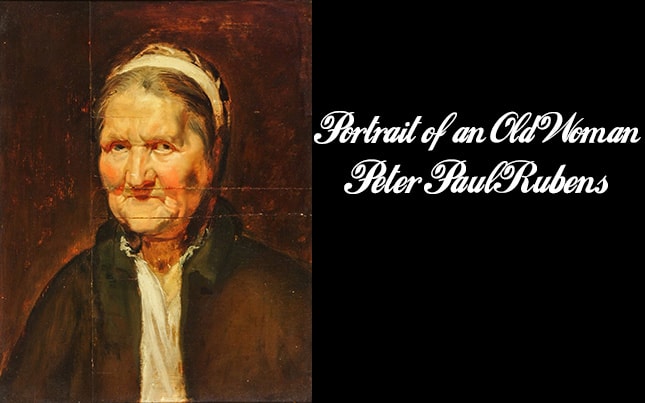In March 2016, a US auction gallery sold an Old Master oil painting (a sketch of an old woman) for $27,000. The sale price was nearly double the high auction estimate of 15,000. However, when the same painting was recently sold by Sotheby’s London in a July 2017 sale as an authentic Peter Paul Rubens, it achieved a hammer of £416,750 (close to $550,000 USD), which is nearly 20 times the original purchase price.
It has been reported that the appraisers at Sotheby’s London relied on certain clues to authenticate painting and attribute to Peter Paul Rubens himself. For example, Rubens had painted this old lady before, and there were examples of Rubens work with the old women at the Museum of Fine Arts in Boston and the Lichtenstein museum. Interestingly, the work was consigned to Sotheby’s after it had been properly cleaned and restored. The restoration work revealed that the sketch had been overpainted, and this overpainting is likely the reason why the work was not properly attributed in the first place. Importantly, this is not the first time an authentic Rubens was late discovered. In 2015, a portrait deaccessed by the Metropolitan Museum of Art was later determined to be an authentic Rubens and fetched $626,500 at auction (over 20 times its original high estimate of $30,000).
As the Washington Post reports, authentic Rubens are valuable – even if they are mere sketches and not final oil portraits. Rubens value has increased. For example, last year a Rubens painting, Lot and his Daughters, set a new record for an Old Masters sale fetching £44.8 million ($58.1 million USD).
Unfortunately, the value and popularity of Rubens make his Old Master works a prime target for forgery. This heightened concern can move an appraiser to conservatively attribute paintings to “school/student/studio of” an Old Master rather than the Old Master himself. This recent Rubens auction sale demonstrates that sometimes the caveat emptor/buyer beware mantra can benefit the buyer in more ways than one. In this case, taking the extra step to invest in restoration and cleaning paid off exponentially for the original auction buyer.
